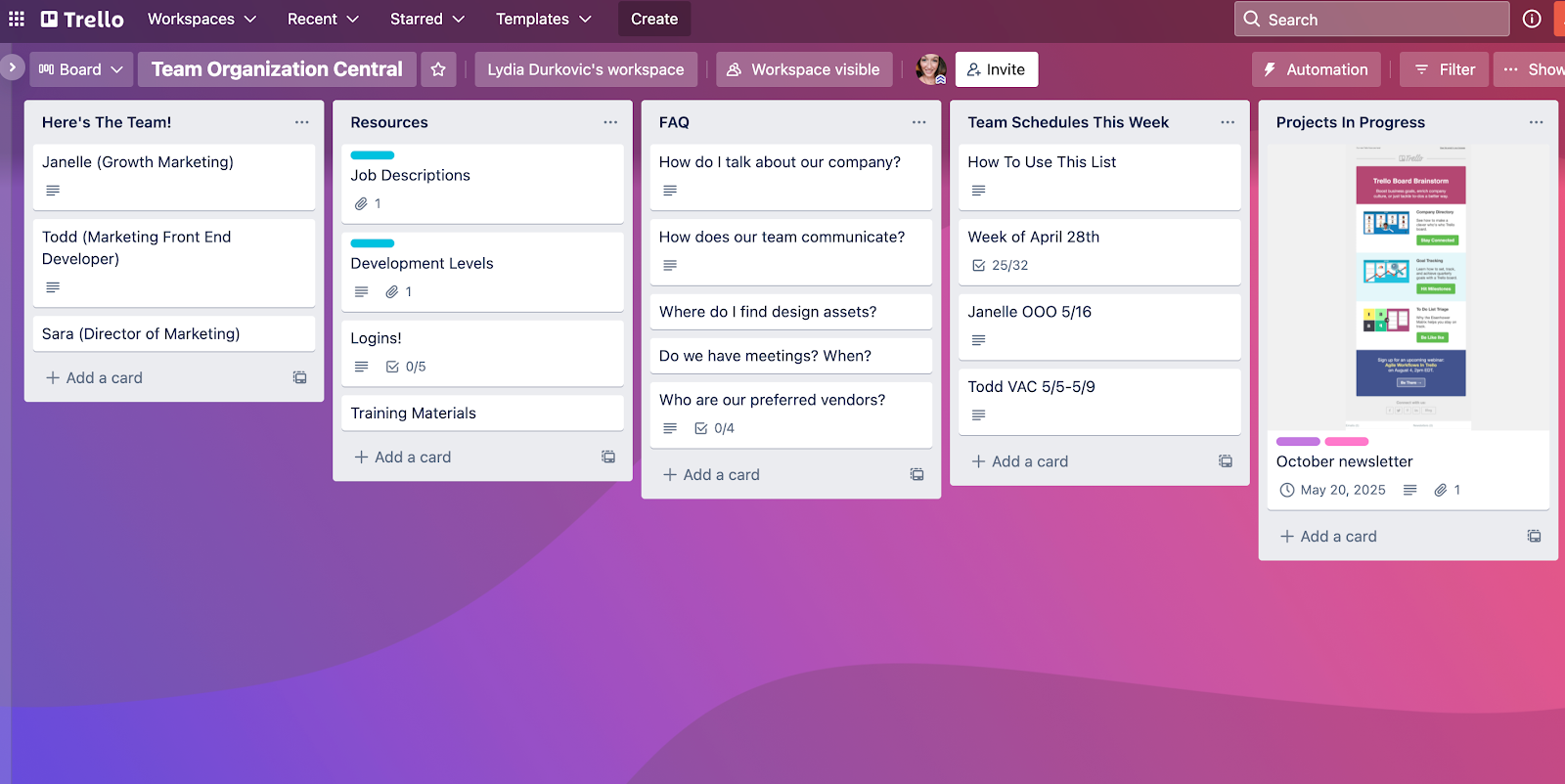Where should employees work? It’s a debate that’s dominated the business world for years now, and a question that’s become increasingly more common as employers try to determine what their office setups should look like in a still very theoretical post-COVID world. But if there’s anything the past two years have proven, it’s that teams can work successfully from anywhere—and there are bigger issues within the workplace that need to be addressed.
“We’re so distracted figuring out where teams should be working that we’re missing the bigger picture on team health,” Dr. Mahreen Khan, Senior Quantitative Researcher at Atlassian, says in their 2021 State of Teams Report. “Factors such as burnout, team and organizational culture, and the team’s ways of working are so much more important than whether a team is remote, co-located, or hybrid.”
As companies battle burnout and try to determine how to retain employees during the “Great Resignation,” the conversation shouldn’t be around whether or not to go hybrid. For enterprise leaders, finding ways to support, engage, and empower their teams to thrive is much more critical.
Culture Determines Team Health
Companies are only as healthy as the teams that drive them. Teams that get along, are unified, and support each other in accomplishing their goals are more engaged and more efficient — and there are big bottom-line impacts to that increased productivity. But healthy teams aren’t created in a vacuum. Culture is a key component in determining whether teams are set up for success or destined to fail from the start.
According to Atlassian’s 2021 State Of Teams Study, employees with a supportive company culture outperform those who do not in almost every area. They’re more engaged (92% vs. 56%), have a higher level of enthusiasm for what they do (71% vs. 29%), and experience significantly lower burnout (22% vs. 53%).
They also have a more positive team outlook, believing they perform better, get along better, and trust each other more than employees on unhealthy teams. The result is a healthier, more cohesive team that’s better positioned to work together to accomplish their goals.
Employees who experience poor company culture, on the other hand, are less engaged, less productive, and at a higher risk for burnout. And when employees start to burn out, their performance suffers—along with the company’s bottom line.
Toxic Cultures Are Costly (Like… Really Costly)
Bad company cultures take a toll on the entire organization, producing ripple effects that impact team productivity, employee morale, and the company’s overall performance.
Atlassian noted that employees on unhealthy teams have significantly lower levels of engagement than those with a supportive culture—just 56% compared to 92%. Forty-four percent have considered quitting, and a staggering 53% admit to experiencing burnout on a regular basis.
That burnout has significant effects on the health and wellbeing of employees, both emotionally and physically. Healthcare-related costs associated with burnout are estimated to be approximately $190 billion per year, and each year the global workforce experiences an estimated $1 trillion per year in lost productivity costs due to anxiety or depression.

Not only does a toxic culture lead to higher burnout, but it’s also a factor in employee turnover. Forty-nine percent of employees surveyed by Oxford Economics said they “would leave their current jobs for a lower-paying position at a company with better organizational culture.”
That turnover isn’t cheap, either. Gallup estimates that between hiring, onboarding, and training a replacement, it costs companies 150% of an employee’s annual salary to replace them.
When you factor in the ripple effects of burnout and turnover—like lost productivity, decreased engagement, and the cultural impact of transitioning a new member onto the team—it quickly becomes clear: Toxic cultures come with a high cost, and companies can’t afford to let one drain the lifeblood out of their organization.
How To Build A Strong Organizational Culture
In a work world marred by burnout and record-high turnover rates, it’s evident that a strong culture is no longer a competitive advantage—it’s essential. But how do you create a culture people want to be a part of? One that encourages team health, engages employees, and keeps burnout at bay? By taking steps to improve your internal processes and foster a more supportive, cohesive workplace, you can build a culture that empowers employees to thrive not just now but for years to come.
Hire For Fit, Not Just Skill
Sure, teamwork makes the dream work—but only when teams gel cohesively as a unit. When team members’ values, work ethics, or personalities don’t align at some level, the result is discord.
According to Atlassian, lack of fit is one of the top contributors to poor team health. In fact, 80% of employees on unhealthy teams report suffering from poor team cohesion, while just 2% of employees on healthy teams feel their team doesn’t work well together.
That cohesion is key to building and maintaining a harmonious culture. One bad apple can ruin the entire barrel—so when you’re adding new members to the team, personality fit is just as important as skill.

Consider the following steps when hiring for cultural fit:
- Clearly define your company values. What core traits do you value most in employees? What values do you want your company to exemplify? Once you know the answer, you can tailor your interview process accordingly. If bravery is one of your core values, for example, make sure you ask candidates to explain how they embody that.
- Figure out what “fit” really looks like. Value alignment is important, but so is team fit. Remember that every team is a microcosm of your organizational culture, and their unique needs vary accordingly. The employees in your IT department, for example, have different personalities and communication styles than your sales reps, so “fit” looks different depending on which team you’re hiring for. Involve key department members within the interview process and ask their teams to define the characteristics that make for a good team member. If you know the traits they’re looking for in a teammate, you’ll be better positioned to select a candidate that will mesh well with the team.
- Screen for more than experience. A good resume is important, but experience alone doesn’t make a great employee. Incorporate questions that give you a better gauge of the candidate’s personality, both on a personal level and—more importantly — as it relates to the workplace. Ask about their communication style, what they enjoy doing in their spare time, and what they’re looking for in a work environment. Do they prefer to work autonomously or collaboratively? What does their ideal company culture look like? Once you know that, it’s easy to determine whether they’re a good fit for the position and for your organization.
By adjusting your hiring process to emphasize cultural fit in addition to technical skills, you can prioritize candidates who improve team cohesion and strengthen the culture you’ve worked so hard to build.
Clearly Define Roles & Expectations
Clear communication is the linchpin of a healthy culture — and a healthy team! After all, employees can’t be successful when they don’t know what’s expected of them. Atlassian found that employees on healthy teams are significantly more likely to have role clarity than those on unhealthy teams. The result? Less time wasted duplicating work someone else already did because it wasn’t clear who was responsible for the task.
If you want to enable employees to work efficiently, take the time to define each role and clearly communicate expectations up front.
Start by outlining each position’s roles, responsibilities, and opportunities for growth — then take a good hard look at your employees and create realistic expectations based on their role, tenure, and history. Make sure managers not only define expectations for each individual employee but also set production goals for the team as a whole. For the sales team, that might mean closing 15 deals as a department. This helps create a sense of unity and holds each member accountable for the success of the team.
Once you’ve defined your roles and expectations, make sure that information is transparently communicated and accessible. Managers can use a tool like Trello to create a resource board where job descriptions, expectations, and growth opportunities within their department are clearly defined and available to those employees.

By clearly communicating role responsibilities and being transparent about expectations for the team, managers can minimize duplication efforts, empower employees to thrive, and increase team health.
Foster A Collaborative Environment
The ability to work together toward a common goal is an essential element of a supportive culture. Atlassian found that 57% of unhealthy teams spend less than an hour a day in contact with one another—and they collaborate less frequently, have a negative team outlook, and suffer from poor cohesion as a result. Teams that collaborate, on the other hand, crush goals together.
Healthy teams that have well-established collaboration rituals are more likely to come together, find ways to improve their processes, plan adaptively, and celebrate wins as a team.
Here are some ways you can help your managers encourage collaboration and foster a sense of connection among their teams:
- Use tools that enable collaboration. It’s hard for employees to collaborate efficiently when they don’t have the right tools or systems in place. Consider utilizing a work management system like Trello, which allows teams to share documents, track project updates in real time, and collaborate remotely with team members or employees from other departments.
- Encourage open communication. Eighty-seven percent of healthy teams say open decision-making is commonplace among their teams, and 97% of employees on healthy teams regularly talk through what’s worked and what hasn’t to make improvements. Encourage these open lines of communication by providing a platform where employees can leave suggestions, offer feedback, and ask questions. Trello’s team boards are a perfect spot for this—people can ask questions anonymously, leave comments on individual cards, and share ideas for workflow improvements or future projects.
- Find creative ways to build connections. Even if your teams are working remotely, it’s critical that you provide opportunities for them to connect on a more personal level. Hold water-cooler events on Zoom, host a virtual happy hour, or consider scheduling optional offsite events that employees can attend in person to nurture those connections with their peers.
By taking steps to enable collaboration and encourage connections between employees and their peers, you’ll be able to create cohesive teams that are healthier—and more efficient.
Empower Teams To Thrive With A Strong, Supportive Culture
A strong company culture doesn’t happen by chance. It’s the byproduct of a workplace where employees are consistently supported, inspired by the work they do, encouraged to grow, and united by common values. By taking the time to build a culture centered around trust, communication, and cohesion, enterprise leaders can improve team health and stave off burnout while increasing productivity company-wide.
See how other companies are using Trello to connect teams, improve collaboration, and sustain a strong culture—from the inside out.
